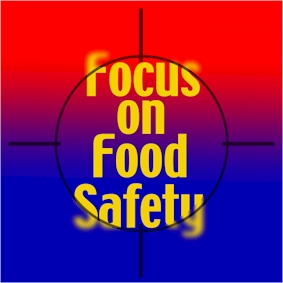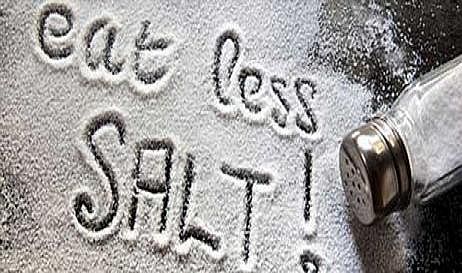 Most Americans Should Consume Less Sodium (1,500 mg/day or less). Most of the sodium we consume is in the form of salt, and the vast majority of sodium we consume is in processed and restaurant foods. Too much sodium is bad for your health. It can increase your blood pressure and your risk for a heart attack and stroke. Heart disease and stroke are the first and third killers of men and women in the United States each year.
Most Americans Should Consume Less Sodium (1,500 mg/day or less). Most of the sodium we consume is in the form of salt, and the vast majority of sodium we consume is in processed and restaurant foods. Too much sodium is bad for your health. It can increase your blood pressure and your risk for a heart attack and stroke. Heart disease and stroke are the first and third killers of men and women in the United States each year.
Category: Wellness
Stay Safe in Extreme Heat
 Heat related deaths and illness are preventable yet many people succumb to extreme heat. People suffer heat-realated illness when their bodies are unable to compensate and properly cool themselves. Here are a few tips to stay safe from extreme heat.
Heat related deaths and illness are preventable yet many people succumb to extreme heat. People suffer heat-realated illness when their bodies are unable to compensate and properly cool themselves. Here are a few tips to stay safe from extreme heat.- Elderly people 65 years and older, infants and children and people with chronic medical conditions are more prone to heat stress.
- Air-conditioning is the number one protective factor against heat-related illness and death.
- During conditions of extreme heat, spend time in locations with air-conditioning such as shopping malls, public libraries, or public health sponsored heat-relief shelters in your area.
- Get informed. Listen to local news and weather channels or contact your local public health department during extreme heat conditions for health and safety updates
- Drink cool, nonalcoholic beverages and increase your fluid intake, regardless of your activity level.
via CDC Extreme Heat | A Prevention Guide to Promote Your Personal Health and Safety.
The High Cost of Injuries at Work
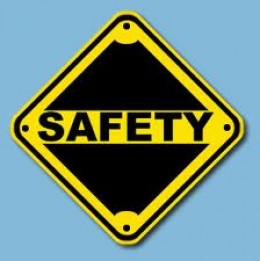 The Bureau of Labor Statistics estimates that approximately 3.3 million serious work-related injuries and about 4,300 fatalities occurred in 2009. The human cost of preventable workplace injuries and deaths is incalculable. However, according to the 2010 Liberty Mutual Workplace Safety Index, the direct cost of the most disabling workplace injuries and illnesses in 2008 amounted to $53.42 billion in U.S. workers compensation costs, more than one billion dollars per week.
The Bureau of Labor Statistics estimates that approximately 3.3 million serious work-related injuries and about 4,300 fatalities occurred in 2009. The human cost of preventable workplace injuries and deaths is incalculable. However, according to the 2010 Liberty Mutual Workplace Safety Index, the direct cost of the most disabling workplace injuries and illnesses in 2008 amounted to $53.42 billion in U.S. workers compensation costs, more than one billion dollars per week.
Making the Business Case for Safety and Health
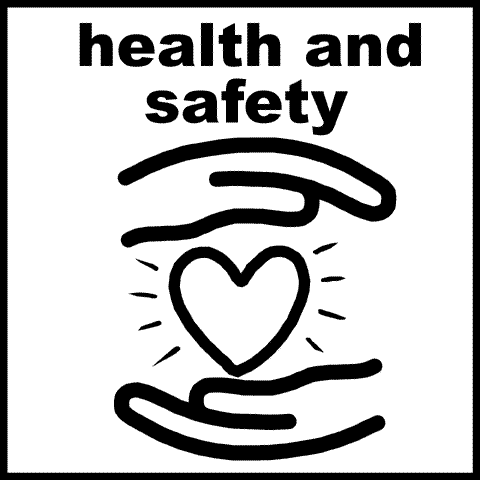 In addition to their social costs, workplace injuries and illnesses have a major impact on an employer’s bottom line. It has been estimated that employers pay almost $1 billion per week for direct workers’ compensation costs alone. The costs of workplace injuries and illnesses include direct and indirect costs. Direct costs include workers’ compensation payments, medical expenses, and costs for legal services. Examples of indirect costs include training replacement employees, accident investigation and implementation of corrective measures, lost productivity, repairs of damaged equipment and property, and costs associated with lower employee morale and absenteeism.
In addition to their social costs, workplace injuries and illnesses have a major impact on an employer’s bottom line. It has been estimated that employers pay almost $1 billion per week for direct workers’ compensation costs alone. The costs of workplace injuries and illnesses include direct and indirect costs. Direct costs include workers’ compensation payments, medical expenses, and costs for legal services. Examples of indirect costs include training replacement employees, accident investigation and implementation of corrective measures, lost productivity, repairs of damaged equipment and property, and costs associated with lower employee morale and absenteeism.
via Safety and Health Topics | Making the Business Case for Safety and Health – Costs.
Coronary heart disease – leading cause of death
 Coronary heart disease (CHD) is the leading cause of death in the United States for men and women.
Coronary heart disease (CHD) is the leading cause of death in the United States for men and women.
Coronary heart disease is caused by the buildup of plaque in the arteries to your heart. This may also be called hardening of the arteries.
Fatty material and other substances form a plaque build-up on the walls of your coronary arteries. The coronary arteries bring blood and oxygen to your heart.
This buildup causes the arteries to get narrow.
As a result, blood flow to the heart can slow down or stop.
A risk factor for heart disease is something that increases your chance of getting it. You cannot change some risk factors for heart disease, but others you can change.
The risk factors for heart disease that you CANNOT change are:
- Your age. The risk of heart disease increases with age.
- Your gender. Men have a higher risk of getting heart disease than women who are still getting their menstrual period. After menopause, the risk for women is closer to the risk for men. See: Heart disease and women
- Your genes. If your parents or other close relatives had heart disease, you are at higher risk.
- Your race. African Americans, Mexican Americans, American Indians, Hawaiians, and some Asian Americans also have a higher risk for heart problems.
Many things increase your risk for heart disease:
- Diabetes is a strong risk factor for heart disease.
- High blood pressure increases your risks of heart disease and heart failure.
- Extra cholesterol in your blood builds up inside the walls of your heart’s arteries (blood vessels).
- Smokers have a much higher risk of heart disease.
- Chronic kidney disease can increase your risk.
- People with narrowed arteries in another part of the body (examples are stroke and poor blood flow to the legs) are more likely to have heart disease.
- Substance abuse (such as cocaine)
- Being overweight
- Not getting enough exercise, and feeling depressed or having excess stress are other risk factors.
Exercise: 7 benefits of Regular Exercise
 You know exercise is good for you, but do you know how good? From boosting your mood to improving your sex life, find out how exercise can improve your life.
You know exercise is good for you, but do you know how good? From boosting your mood to improving your sex life, find out how exercise can improve your life.
Want to feel better, have more energy and perhaps even live longer? Look no further than exercise. The health benefits of regular exercise and physical activity are hard to ignore. And the benefits of exercise are yours for the taking, regardless of your age, sex or physical ability. Need more convincing to exercise? Check out these seven ways exercise can improve your life.
- No. 1: Exercise controls weight
- No. 2: Exercise combats health conditions and diseases
- No. 3: Exercise improves mood
- No. 4: Exercise boosts energy
- No. 5: Exercise promotes better sleep
- No. 6: Exercise puts the spark back into your sex life
- No. 7: Exercise can be fun
The bottom line on exercise and physical activity are a great way to feel better, gain health benefits and have fun. As a general goal, aim for at least 30 minutes of physical activity every day. If you want to lose weight or meet specific fitness goals, you may need to exercise more. Remember to check with your doctor before starting a new exercise program, especially if you have any health concerns.
via Exercise: 7 benefits of regular physical activity – MayoClinic.com.
Foodborne Disease Outbreaks Are Deadly Serious
You can keep you and your family safer by remembering to:
- Clean. Wash hands, cutting boards, utensils, and countertops.
- Separate. Keep raw meat, poultry, and seafood separate from ready-to-eat foods.
- Cook. Use a food thermometer to ensure that foods are cooked to a safe internal temperature: 145°F for whole meats (allowing the meat to rest for 3 minutes before carving or consuming), 160°F for ground meats, and 165°F for all poultry.
- Chill. Keep your refrigerator below 40°F, and refrigerate food that will spoil.
- Report suspected illness from food to your local health department.
- Don’t prepare food for others if you have diarrhea or have been vomiting.
- Be especially careful when preparing food for children, pregnant women, those in poor health, and older adults.
Dangers of Staph Infections
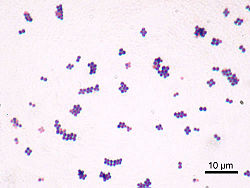 Staph infections are caused by staphylococcus bacteria, a type of germ commonly found on the skin or in the nose of even healthy individuals. Most of the time, these bacteria cause no problems or result in relatively minor skin infections.
Staph infections are caused by staphylococcus bacteria, a type of germ commonly found on the skin or in the nose of even healthy individuals. Most of the time, these bacteria cause no problems or result in relatively minor skin infections.
But staph infections can turn deadly if the bacteria invade deeper into your body, entering your bloodstream, joints, bones, lungs or heart.
In the past, a lethal staph infection might have occurred in a person who was hospitalized or had a chronic illness or weakened immune system. Now, a growing number of otherwise healthy people are developing life-threatening staph infections. And many staph infections no longer respond to common antibiotics.
Healthy Eating: Benefits of a Healthier Diet
 How do you get started on healthy eating?
How do you get started on healthy eating?
Healthy eating starts with learning new ways to eat, such as adding more fresh fruits, vegetables, and whole grains and cutting back on foods that have a lot of fat, salt, and sugar.
A change to healthier eating also includes learning about balance, variety, and moderation.
Lift properly to prevent back injury
 No one is immune to back injury. Whether you have a strong back or have hurt your back before, it is well worth it to:
No one is immune to back injury. Whether you have a strong back or have hurt your back before, it is well worth it to:
- Stop yourself before casually picking up a light or heavy load.
- Plan in your mind for the best way to lift what’s in front of you. This could include enlisting help from one or more people.
- Lift and move slowly and carefully.
The time you take to use the right lifting mechanics is far less than the days, weeks, or months it can take to heal from a back injury.

